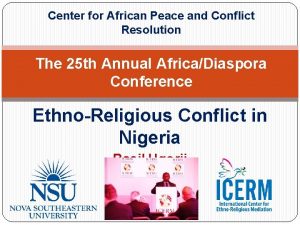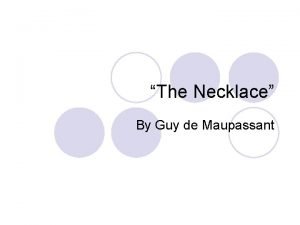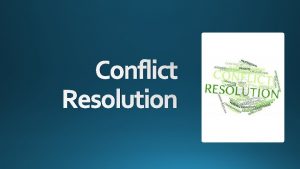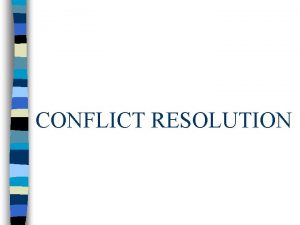Origins of Conflict and Conflict Resolution Pages 400






- Slides: 6

Origins of Conflict and Conflict Resolution Pages 400 -403

Inter-group conflict is widespread throughout human societies. War, discrimination, terrorism, and conflict between gangs or political parties are all too common social phenomena. Mc. Donald, Navarrette and Van Vugt (2012) Origins of Conflict Agree with Sherif that competition for resources may result in conflict – but they attribute this to a more evolutionary explanation. In particular, they ask: why are men so often the aggressors and the victims involved in inter-group conflict? The male warrior hypothesis: claims that men possess specific psychological mechanisms that predispose them to planning, initiating and executing acts of aggression with the specific goal of acquiring or protecting reproductive resources (women). Outgroup females are seen as being less of a threat. If a female does engage in inter-group conflict, it is more likely that the conflict may result in sexual assault, encouraging females to avoid contact with outgroup males. Controversial like other evolutionary theories, but it provides an explanation for the disproportionate levels of male violence in our society.

There is a cognitive explanation for inter-group conflict: Cikara, Botvinick and Fiske (2011): read on page 401 -402 Origins of Conflict They discovered a link between an individual’s social identity, the value attached to this identity and their willingness to harm the outgroup. Using self-reporting and f. MRI’s, they measured the affective and neural responses of die-hard baseball fans (Yankees or Red Sox fans) while the fans were observing plays that were considered positive, negative, and neutral for their team. Researchers correctly predicted that when observing a result positive to their team, fans would respond with a positive emotion, but when they experienced a result that was negative for their team, they would respond with a negative emotion and a willingness to cause an outgroup member harm.

Frustration-aggression hypothesis (Dollard et al, 1939): Origins of Conflict Aggressive behavior is a result of frustration caused when something or someone obstructs us from fulfilling a need or a desired goal. This frustration must be released, and in the absence of a more productive release such as sport or consensual sexual contact, violence and therefore conflict may occur. Researchers argue that weaker or minority groups are often targeted.

Social and institutional support: those with the power to enforce legislation and create the new social climate need to have a clear rationale and plan for implementation so that reducing prejudice is the common goal and they are all able to support the suggested policies. High acquaintance potential: Conflict Resolution The groups should meet on a frequent basis and for a long enough period for meaningful positive relationships to form. Equal status between groups: By providing a contact situation that offers equal status between the groups, there is less chance that any pre-existing negative stereotype may be reinforced. This might be achieved by designing the group task in a way that both parties are performing a similar role in the group. Cooperation: Sherif’s work and much of the research that followed it has highlighted the importance of cooperating in resolving conflict. Robber’s Cave

The jigsaw classroom: schools can often be a source of fear and terror for those being bullied or not accepted. This classroom technique, developed by Elliot Aronson, has been successfully utilized in schools by encouraging the creation of cooperative learning groups in classrooms. Conflict Resolution These tasks involve dividing the task equally among group members to ensure that success can only be achieved if students cooperate with each other. Ex. A psychology project on the origins of conflict: one student may research biological explanations, another student searches cognitive explanations and a third student may take sociocultural explanations. Slavin (1980): Reviewed 14 studies of ethnically diverse classroom settings in which the jigsaw classroom technique had been utilized. These jigsaw classrooms were compared to a control classroom using “normal” teaching methods. 11 out of the 14 studies found significant evidence of improving attraction between social and racial groups, demonstrating support for the cooperative classroom and the principles of the contact hypothesis.











